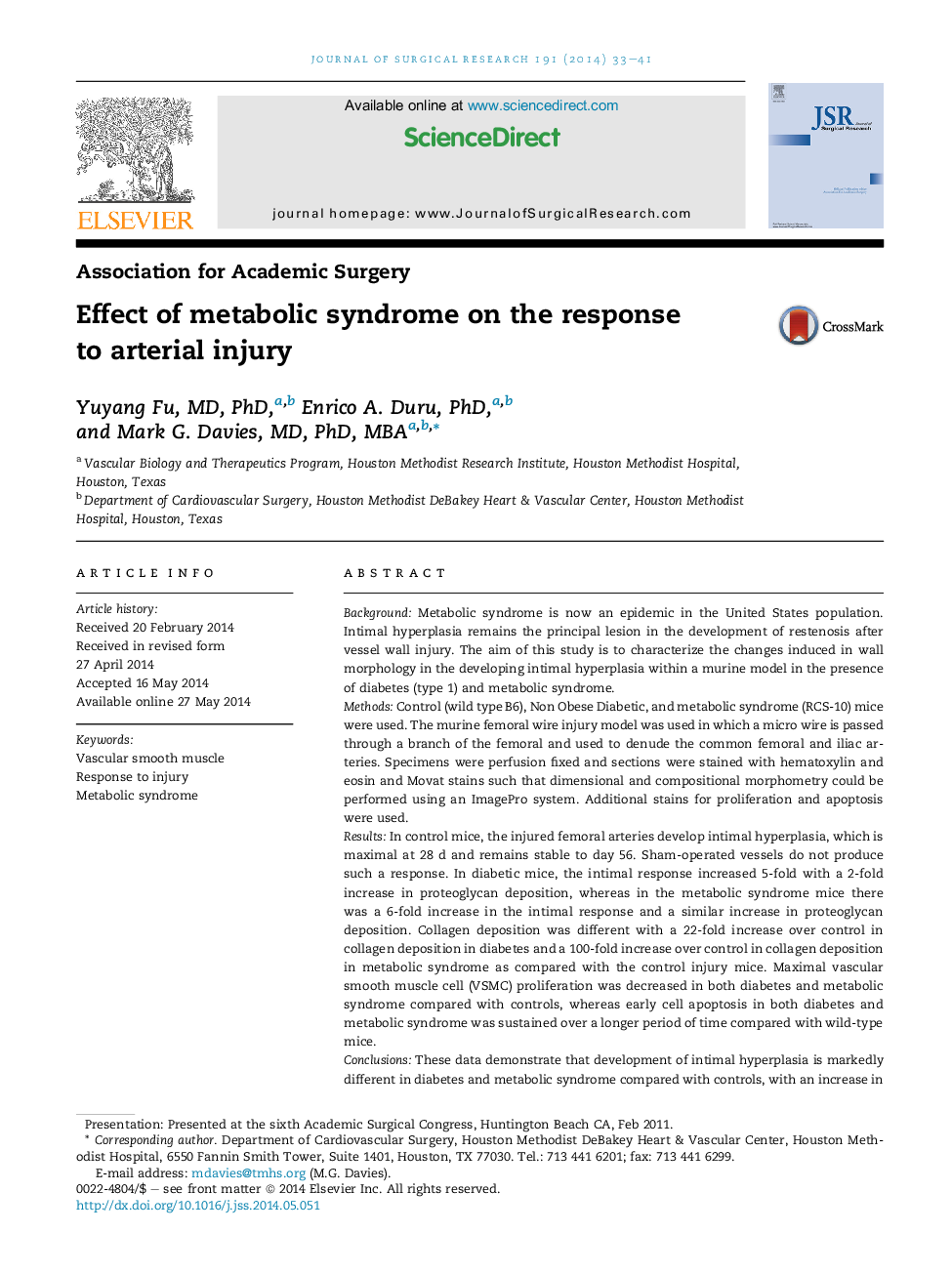| کد مقاله | کد نشریه | سال انتشار | مقاله انگلیسی | نسخه تمام متن |
|---|---|---|---|---|
| 6253825 | 1288410 | 2014 | 9 صفحه PDF | دانلود رایگان |
BackgroundMetabolic syndrome is now an epidemic in the United States population. Intimal hyperplasia remains the principal lesion in the development of restenosis after vessel wall injury. The aim of this study is to characterize the changes induced in wall morphology in the developing intimal hyperplasia within a murine model in the presence of diabetes (type 1) and metabolic syndrome.MethodsControl (wild type B6), Non Obese Diabetic, and metabolic syndrome (RCS-10) mice were used. The murine femoral wire injury model was used in which a micro wire is passed through a branch of the femoral and used to denude the common femoral and iliac arteries. Specimens were perfusion fixed and sections were stained with hematoxylin and eosin and Movat stains such that dimensional and compositional morphometry could be performed using an ImagePro system. Additional stains for proliferation and apoptosis were used.ResultsIn control mice, the injured femoral arteries develop intimal hyperplasia, which is maximal at 28Â d and remains stable to day 56. Sham-operated vessels do not produce such a response. In diabetic mice, the intimal response increased 5-fold with a 2-fold increase in proteoglycan deposition, whereas in the metabolic syndrome mice there was a 6-fold increase in the intimal response and a similar increase in proteoglycan deposition. Collagen deposition was different with a 22-fold increase over control in collagen deposition in diabetes and a 100-fold increase over control in collagen deposition in metabolic syndrome as compared with the control injury mice. Maximal vascular smooth muscle cell (VSMC) proliferation was decreased in both diabetes and metabolic syndrome compared with controls, whereas early cell apoptosis in both diabetes and metabolic syndrome was sustained over a longer period of time compared with wild-type mice.ConclusionsThese data demonstrate that development of intimal hyperplasia is markedly different in diabetes and metabolic syndrome compared with controls, with an increase in collagen deposition, a reduction in VSMC proliferation, and an increase in early VSMC apoptosis. These findings suggest that preventative strategies against restenosis must be tailored for the diabetic and metabolic syndrome patients.
Journal: Journal of Surgical Research - Volume 191, Issue 1, September 2014, Pages 33-41
